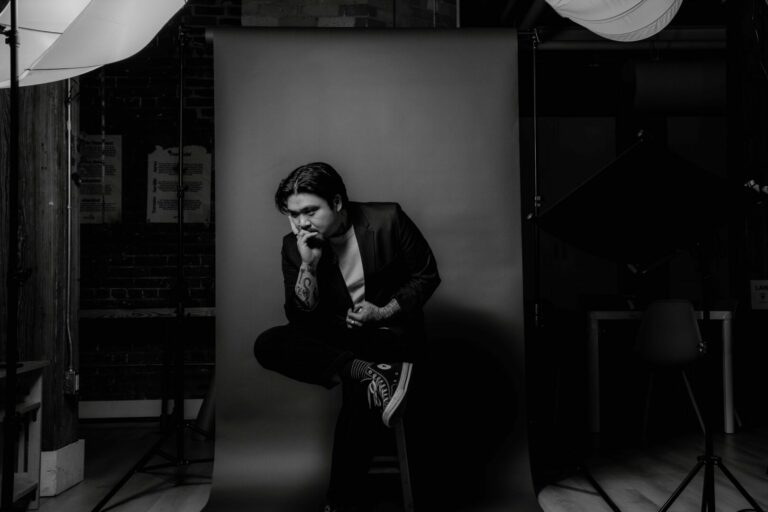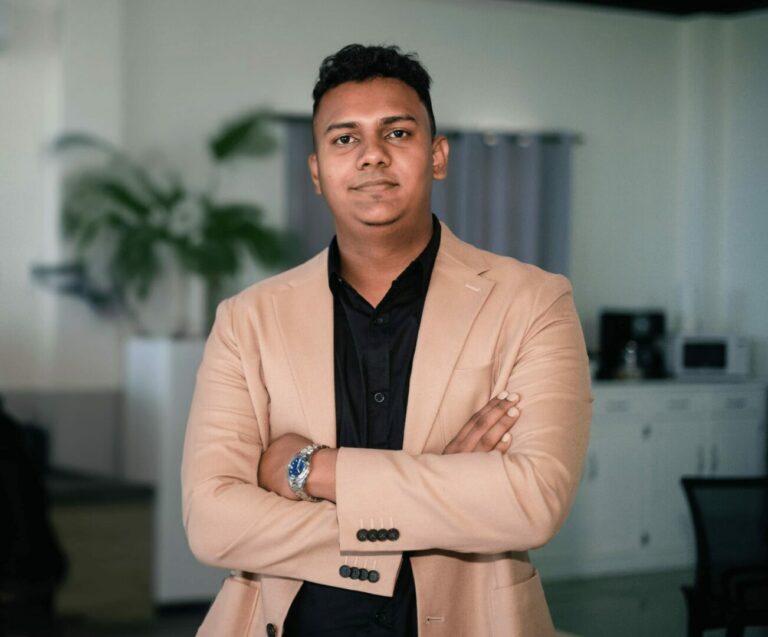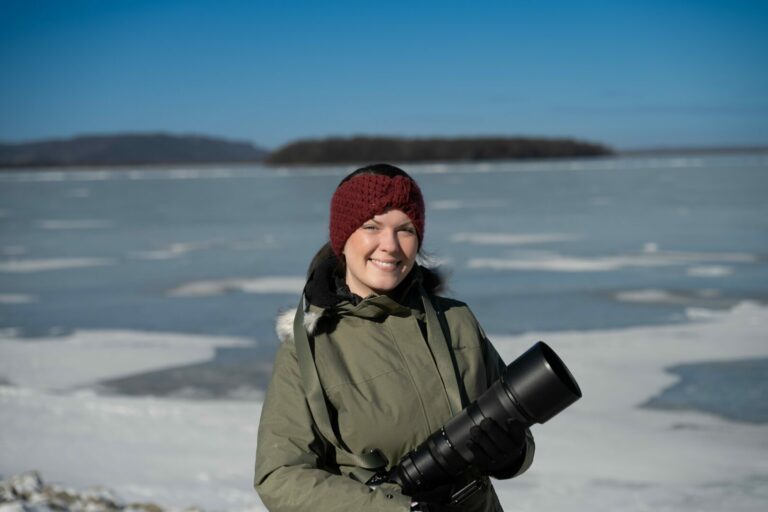We caught up with the brilliant and insightful Ken Hooks a few weeks ago and have shared our conversation below.
Ken, thank you so much for making time for us. We’ve always admired your ability to take risks and so maybe we can kick things off with a discussion around how you developed your ability to take and bear risk?
This question is very interesting. I had to actually look at the definition to wrap my head around a response. Britannica dictionary defines risk as the possibility that something bad or unpleasant (such as an injury or a loss) will happen. Short answer, I look at risk as a challenge. Non-calculated risk. Juggling 3 bottles of milk without training type of risk. This outlook was birthed from being repeatedly thrust into situations which I thought I had no business. Some situations designed for failure, and some designed to promote. Mentally, I feel like there cannot be any failure. Each situation is a learning experience. Failing is a part of that experience. Embracing the failure as learning has made the idea of risk a positive idea. And, this is good risk I speak of. Bad risk, I think of something outlandishly nonsensical – walking on fire without training. Good risk yields outcomes of positivity, progress, and prosperity; they are just on the other side of fear. The only loss, or downfall, in my reality, is one given away – an opportunity not taken. You cannot be counted out if you are the one doing the math!
Absurd. Heavy laughter. Absolutely not. If 17 year old Ken, as a fresh high school graduate, saw 41 year old Ken in a crystal ball, these would have been the words escaping a very hysterical me. I thought my calling was physical labor. Not to be bothered by the public, and using my innate athleticism to excel in different instances of physical labor. The problem I ran into, though, was the recurring theme of intelligence insulting. Nothing would grind every one of my gears more than being treated as a lesser human due to my position in the workforce. Enter the idea of entering the medical field. Upon a recommendation from an acquaintance, I enrolled in a Respiratory Therapy program. Loving math, science, and biology, yet never taking on postsecondary education, there was fear. Being told in my interview that the instructors intentionally try to fail the students filled me with fear; after all we would be taking care of people upon matriculation. Understanding is my way of . . . understanding. I learn by understanding, not mindlessly recollection. This allowed for a solid progression of risky business. Out of a class of 25 students, 7 graduated. The fear that spurned hesitation, the risks taken to be the best, paid dividends. The risk/challenge concept began to feel more like risk/success.
Now, this was not the end, no. This was chapter 1. My love for patient care drove a desire within me to learn more and do more in healthcare. Enter sleep diagnostics. And, what an interesting entry. I was terrible, to be quite nice. Training was nothing more than how to set up a patient for a sleep study. Nothing close to understanding the intricacies of breathing while sleeping, its adjunct happenings, and how to “read” what in the world was occurring. After rightfully being belittled and berated by the interpreting physicians, I took another risk. I left what I knew, what I was heavily trained in, for something new and otherworldly. I left respiratory therapy and went full-time sleep diagnostics. The risk became the challenge. In voicing the desire to be the best, 2 gentlemen and 1 gentle woman physician (Jody Sandifer, Donnie Henderson, and Dr. Antoinette Rutherford) taught me everything they knew, and thrust me into situations that would be risky for their positions. The overall desire to succeed was solidifying risk/success over risk/failure. Why not take another risk? Why not move to another city to manage diagnostic centers? It mattered not that I had never used the hardware or software that I would begin to use. It mattered not that I had no experience building a diagnostic center from the ground up. What was there to lose? Ha! Everything!
A very fearful entry into a new position, honestly above my know how, the idea of succumbing to risk rained daily upon me. “I can’t believe you just moved here with no back up plan.” These words from my manager would be oh so delicately delivered at least once a week for a few years. Sheesh! Had I become arrogant? Had I become blind to the true idea of risk? In my reality risk meant success, yet failure was the wind whisking about every turn. Daily reminders of the possibility of inadequacy made feel as though this was truly my end. The burgeoning challenges brought about thoughts of inadequacy within myself. But wait . . . my reality was filled with previous risk/success scenarios. Why was this different? This job consisted of multiple facets versus the previously singularly focused risks. So, why not conquer 1 facet at a time? Yes, this was the technique. Early mornings and late nights became the song I danced to, for the next year. A dedication even beyond my stint in college. The idea to triumph over 1 challenge at a time would deliver me from the bowels of the land of doubt. A streetcar named desire once again picked me up. Reminded me that the outcome of risk is, in fact success. The blind rage of, “I’ll show you,” that previously punched its way through risk did not work at this level. Problem solving and understanding the landscape of requirements gave me greater clarity in creating risk/success.
Fast forward to the now times. Multiple local news appearances, multiple nationwide speaking engagements, multiple articles, and a respected source for sleep diagnostic impressions. The risk of failure and inadequacy has never been greater. Nonetheless, the risk of success is even greater. Facilitating and fostering the mindset of a problem solver has been my greatest asset against risk/failure. There is fear of the unknown, and yet a delightful journey to it. Failure is incomprehensible. Only learning, growth, and adaptation exist. History has proven risk equals success.
Thanks for sharing that. So, before we get any further into our conversation, can you tell our readers a bit about yourself and what you’re working on?
Currently, I am a Clinical Representative for Inspire Medical, Inc. and co-own True Sleep Diagnostics. Respiratory Care was my entry into healthcare. Respiratory Care felt like home to me, after years of working at Lowe’s Home Improvement, and running an at-home computer repair business. I loved math and science, and the field of respiratory satisfied that love more than I could have imagined. It was a challenge, it was intricate, it was important. I could see and feel the impact of “work”. Patients cared and were thankful for us (therapists).
Venturing into sleep diagnostics was a plus, a benefit of sorts. As a respiratory therapist, I did not have to attend a sleep course/school. I could work in the field of sleep and become registered without undergoing coursework. And at the time, it was an easy gig. Wait, after the initial shock of being trained and still not understanding what was going on, it became an easy gig. Sleep diagnostics did not initially resonant with me until I tried to learn more about the field and how to advance. Switching from 1 sleep lab to another made a tremendous difference in my understanding. There were sleep diagnostic veterans here. I soaked up all information and made a pledge to become the best. Cliché, I know. That made me cringe saying it, but . . . I felt it was a great environment to help me ascend into sleep management. To take 1 step back, there was 1 night that made me realize there was more to sleep diagnostics than was commonly known/understood. One of the monitoring components of an in-lab sleep study is EKG/ECG – electrocardiograph. An EKG/ECG reads the electrical activity of the heart. We run a simple one in the sleep lab. One night a patient’s EKG/ECG was belligerently terrible. I honestly do not know how he did not have a heart attack right then and there. His heart was out of control. Firing hither and tither without rhyme or reason. Halfway through the study I applied continuous positive airway pressure, more commonly known as CPAP, and his heart tracing immediately normalized. Oh my! This blew my mind. I had never experienced anything like this before my eyes. In an instant, he was “fixed”. This was it. I would become dedicated to “fixing” every child and adult that warranted treatment. And I was pretty good (toot horn here). 92% success rate of optimal positive pressure settings and lauded sleep testing data tracings. The time to ascend could not have been greater.
Moving into management was an experience all its own. Managing the success of the mission, expectations of physicians, and the personalities of the sleep technicians who did not realize their importance was a challenge. Through the experience I grew tremendously. Learned how to build a lab from scratch, learned intricacies of the business of sleep, learned hospital dynamics from the top down, and most of all learned how to cultivate a great work environment for those I managed. 1 year into this role, I was asked to teach the Sleep Technician Course at a local Technical College. A year later I meet the man I endearingly call my mentor, Dr. John White. Just when I thought I was the pinnacle (insert laugh here), Dr. White introduced me into another, more intricate realm of sleep diagnostics; airflow dynamics and facial architecture. These 2 facets are not necessarily regarded in the field of sleep – more so now than ever. We published a case study together approximately 6 months after we met. Revealing how facial architecture plays a remarkable role in nocturnal breathing disturbance; the inability to maintain a stable airway during sleep. We ran into trouble though, as what we were doing was overlooked and disregard in mainstream sleep diagnostics. To bolster the hospital sleep program and offer oral appliance therapy, I wrote a business plan to incorporate my mentor into the sleep department. It was received, yet sadly, not accepted. We tried, what we thought, was a great work-around. We would just send his patients to the hospital for testing and provide oral appliances to the appropriate patients as they were sent back. However, the patients were never returned to Dr. White. They were kept in the hospital system. True Sleep Diagnostics was created for him. For my mentor who bore my mindset to this day. With my sleep company, he would not lose his patients, and his patients would not only be treated, but well educated. As we were building process, Dr. White introduced me to Autumn Henning. Autumn, and please forgive me Autumn if I forget some of your credentials, is a CCC-SLP, COM, IBCLC. Speech Language Pathologist, Certified Orofacial Myologist, and Certified Lactation Consultant. She is a master of the form and function of the mouth.
Autumn suggested I speak at a conference for a large group of professionals. And here we are. I have become a trusted source for airflow dynamic assessments, how airflow dynamics may be affected by facial structure, how to understand sleep study reports, and how the lack of good consolidated sleep effects body systems. True Sleep Diagnostics offers mail order home sleep tests across the nation and in Canada, in addition to second opinions and sleep study report explanations all over the world. Educating patients and providers, as well as providing acute data assessments has been my passion for the last 6 years. I am at my happiest when I am caring for others, and True Sleep Diagnostics is the culmination of that desire.
I thought this would kind of be it. I live out my days as a sleep savant. Riiiiiide off into the sunset; leaving a trail of changed lives. A new venture is brewing, however. Brandi Berg, a Registered Respiratory Therapist and Sleep Disorder Specialist, owner of Sleep Insight, LLC, has trained with me for 8 months. She is beginning to provide home sleep testing with the same dedication and desire as myself. With Brandi aiding in acute sleep diagnostics, I am working on creating a Bourbon Bar, here in Greenville, SC. The Operating Room will combine a high-end experience with a community feel. Again, I am happiest when caring for others. In this endeavor, my desire is to garner a community of love and positivity via the networking of Bourbon history and intricacy.
Looking back, what do you think were the three qualities, skills, or areas of knowledge that were most impactful in your journey? What advice do you have for folks who are early in their journey in terms of how they can best develop or improve on these?
Taking risks, believing in your abilities, and having stubborn perseverance placed me in situations in which I was uncomfortable. The lack of comfort required me to develop a strategic mindset and observant personality. If you are early on your journey and you have a clear idea of the destination, understand there are many paths. Do not give up because of closed paths; there are more. More development may be required for other paths to become clear. If you feel stopped or stumped, use that time to further knowledge and wisdom in regards to your destination. Also, be proud of your journey. Share your journey. Believe in your destination. Let others know your destination; you never know who can help or facilitate another path.
Any advice for folks feeling overwhelmed?
Please give yourself a break. We can become so fixated on a goal that we get tunnel vision. Ignoring everything around us and ultimately running into a wall. When feeling burned out or overwhelmed, put yourself in another environment (even another room). Removing yourself from your “creative/business” environment will help clear your mind. A release of thought may very well bring new ideas and understanding.
Contact Info:
- Website: http://www.truesleepdiagnostics.com
- Linkedin: https://www.linkedin.com/public-profile/settings?lipi=urn%3Ali%3Apage%3Ad_flagship3_profile_self_edit_contact-info%3BZQe%2FbvMARGCm%2FyZTPVeICA%3D%3D
- Other: www.theorbourbonbar.com is the website address for The Operating Room Bourbon Bar





Image Credits
N/A




